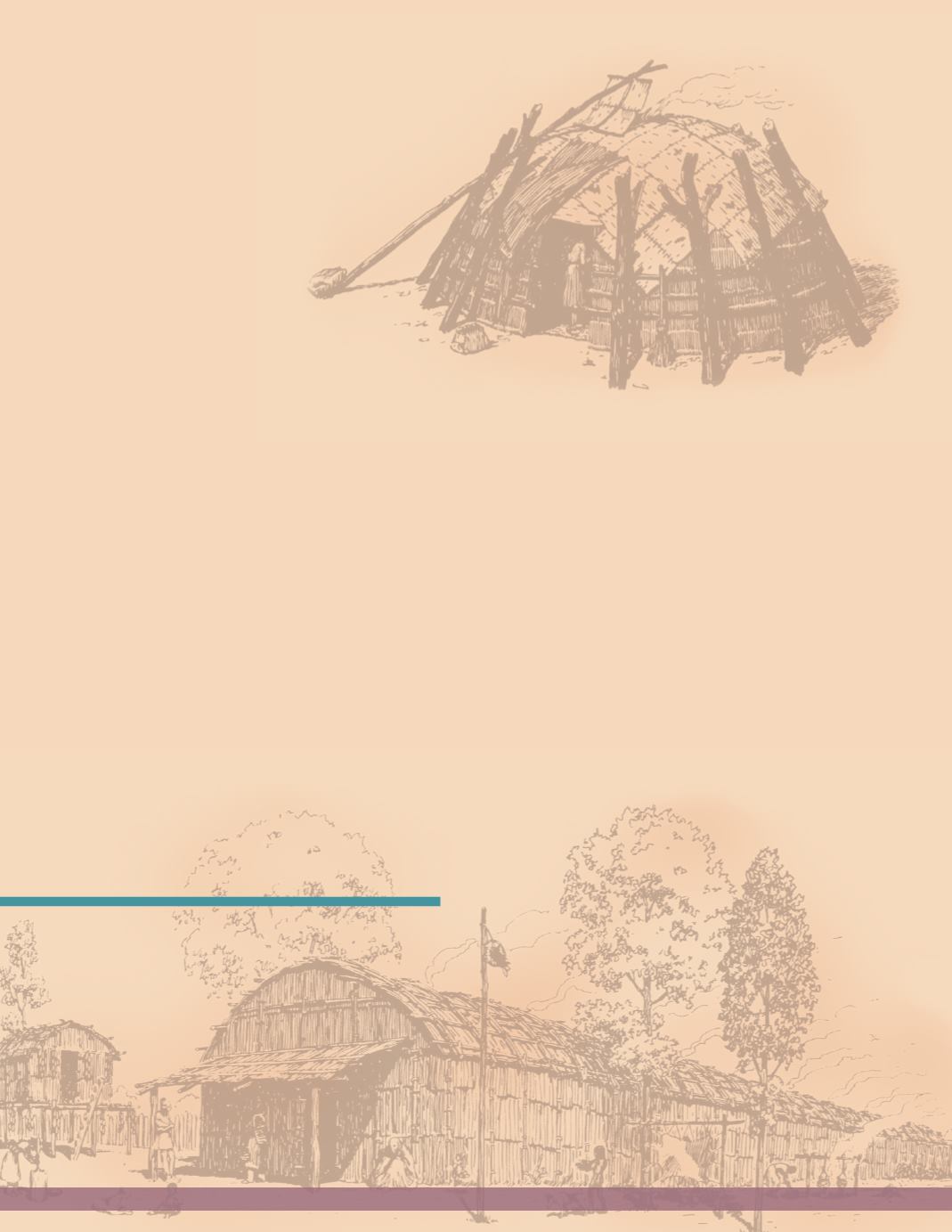
The Native American justice systemwas simple.
There were no judges or written rules. At this time,
Native Americans did not have a written language.
They lived by a simple rule of right and wrong. Lying,
stealing, andmurder were wrong. Punishment was
usually under the idea of “an eye for an eye, a tooth
for a tooth.” Under this system, if you stole from
someone, you would pay by giving away some of
your possessions. If youmurdered someone, you
were killed by amember of the victim’s family. This
was called justice, not revenge. In the event of a
large dispute, a council of tribesmen wouldmeet to
settle the problem.
Their Homes
Algonquians built small homes called
wigwams
for each family. Out of young trees, they built three
styles of frames for their wigwams. These structures
were one of three shapes—rounded, cone,
and rectangular.
Algonquians also built
sweat houses
. They
poured water over hot rocks to create steam—like
their own health spa. After being in the steam for
awhile, they would often run and jump into a nearby
streamor roll in the snow. This was onemethod of
keeping clean.
The Iroquois tribes built their homes differently
than the Algonquian tribes. Iroquois built their homes
out of the samematerials, but they built
longhouses
.
Around their villages, the Iroquois built wooden
fences with spikes as a protection against wild
animals and enemies. Asmany as 20 familiesmight
share a single 20 by 100 (or more) foot longhouse.
In a typical household, all of the relatives related to
themother or grandmother lived together.
When an Iroquoismanmarried, hemoved in
with his wife’s family, but he did not belong to the
clan. However, their children were part of the wife’s
clan. In old age, theman could not count on being
helped by his children. He had to go back to his
mother’s clan. Algonquian families had similar living
arrangements among their villages.
Their Roles and Clothes
Men, women, and children had very clear cut
roles among the Iroquois and Algonquian tribes.
Men were the hunters, warriors, and tool makers
within the tribes. The women planted corn, beans,
and squash, picked berries, and gathered nuts that
were in season. They skinned animals, prepared
and cookedmeals, made clothing, and tended
crops. Boys were expected to learn the skills of the
father. Girls were expected to learn the skills of the
mother. Children were taught to respect their elders
and to appreciate life.
Deerskin was the clothing fabric of choice. Once
skinned, the deer pelt was brushed until the hair
rotted off. The skin was then tanned into clothing
called buckskin. Shirts, leggings,
loincloths
, and
skirts, as well asmoccasins, were all made from
the buckskin. Men and women saved their best
clothes for special events. One set of work
garments was usually enough for each person.
Robes and blankets weremade out of bear, beaver,
or raccoon fur.
Men and women took very good care of their
hair. Women prized long hair and since it rarely
turned gray; dyes were not used. Men paid even
greater attention to their hair. Every day, they
covered it with bear fat tomake it glossy, and
sometimes added soot tomake their hair blacker.
Algonquians built small, round homes for each family called
wigwams (above). Iroquois built much larger homes, called
longhouses (below), which housed sometimes as many as 20
separate families.
24
Understanding Pennsylvania


